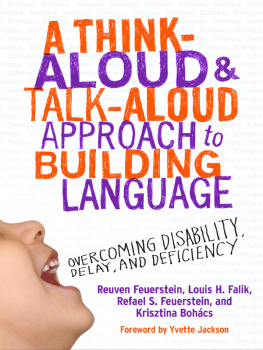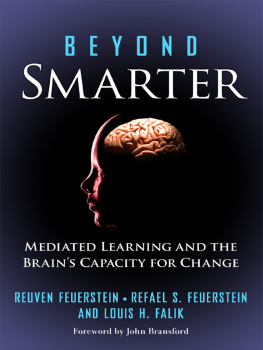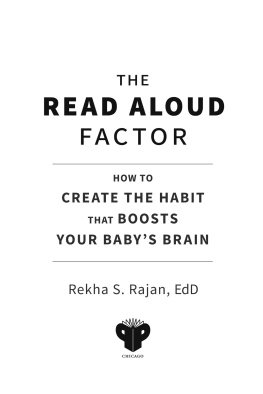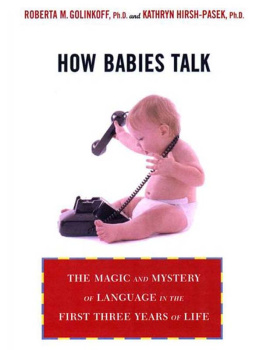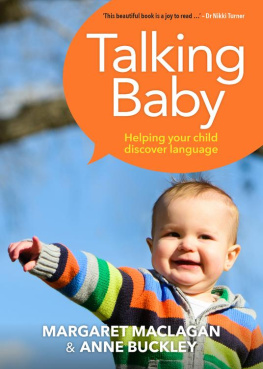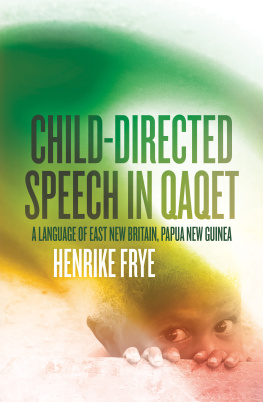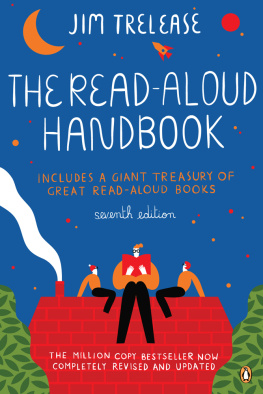CHAPTER 1
Mediating Language Development
Talking and Thinking Aloud to Overcome Language Poverty, Delay, and Disability
This book introduces the reader to an innovative approach to stimulating language development in children whose speech is in need of systematic stimulation or whose speech development has been delayed or impaired. Throughout we will be addressing two sets of readers: parents and caretakers who interact with their children on a daily basis, and educators and other professionals concerned with improving speech and language. Both groups can benefit from the approach we describe, and can in fact collaborate with one another to respond to the needs of children. Our approach is directed toward all of these populations who work with children (or with adults of whatever age) who can benefit from a systematic, mediated exposure to language. However, the approach described in this book is particularly valuable to those who are at risk of failing to develop linguistic processes due to a variety of conditionsautism, brain injury, genetic/chromosomal conditions, language poverty, language deterioration or loss due to aging, and other kinds of developmental delays. Our approach is innovative because it applies our concept of mediated learning experience (as we describe in ) to what is now known about how the brain functions, and that can be modified by exposure to language. For younger children it provides an early and intensive intervention, providing a greater, more available, and systematically planned and executed exposure to language.
The approach seems simple, and many will say that they already do it! In fact, it should be a part of our natural interaction with our children. However, under certain important conditions, it requires an understanding of processes and application of skills that, while not difficult to achieve, require a particular perspective and body of knowledge, and a conscious and purposeful awareness, that often make it far from simple to initiate and sustain.
What are we talking about? We believe that natural self-talk occurs within every thinking individual and is an important resource for the stimulation of language awareness and acquisition. For the child, the adults self-talk reflects what is being experienced, helps in planning and interpreting, and links direct exposure with the indirect input of language, symbolism, and deeper levels of meaning. We call this soliloquy to describe the speech of a person speaking alone or appearing to speak only to oneself (think of Shakespeares Hamlet or Lady Macbeth To be or not to be, that is the question or Out, out damned spot ). For us, soliloquy describes the adult who engages in self-talk, in the presence of the child, while expecting only that the child overhears the language produced, and is not required to attend, respond, or even acknowledge that listening is occurring. This experience (for the one who overhears) creates important changes that take place in the brain (see ), and a platform for both cognitive and language development.
We further define the intentional, systematic, and planned use of this approach as mediated self-talk (MST), to convey the intimate relationship between the soliloquy (self-talk) and the application of mediated learning experience (MLE). You will see MST and MLE referred to often in this book, as we elaborate on the concepts and describe their important contribution to the process of language acquisition and development.
It is important to understand why this approach was formulated (the theory) and when and for what reasons it was formulated (the historical context). It is based on what senior author Professor Reuven Feuerstein observed, and how his observations fit into the context of the times and the needs of the children and families with whom he met and worked. The theory guides us to an understanding of the potential for modifying the learning and behavior of children, and how this modifiability goes well beyond behavior and affects the cognitive and neurological structures of the individual. It links the role and function of language to the process of cognitive development. With these two perspectives in mindthe potential for modifiability and the role of languageone has options to effect meaningful change when one encounters children whose life experiences prevent their development (due to poverty; being members of culturally different communities where the first language may be rich but the language of the dominant culture limited; or having a developmental, genetic, or chromosomal condition).
The options are positive and accessible. Research neurophysiology has made it clear that using MST as an early and natural interventioneither as a developmental experience or targeted toward specific developmental or functional deficitscan enhance and develop cognition and learning through the medium of linguistic formulation and interaction.
The chapters that follow are written for both parents and caregivers who may not have a background in language development, education, or psychology, but are also appropriate for educators and specialists who may wish to adopt the practices in their own work or help parents and others undertake them. Our intention is to be accessible and informative, but also to offer sufficient technical information so that MST will be well grounded, specific, and functional. We will provide both the theoretical and conceptual rationale and a practical guide that will lead toward the effective use of the approach.
MST can be applied by parents, teachers, and other caregivers who interact with children and other learners who are at risk at early ages and stages of development, or at later periods in situations of language delay or loss. If one understands the what, why, and how of such activities, one will be able to focus and direct them toward facilitating important aspects of language development, and sustain the activity in the face of what appears to be lack of response, progress, etc.as we shall discuss in several other places in this book.
WHAT IS MEDIATED SELF-TALK (MST)?
What is MST, and what it is not? There are many ways of describing and interacting with the child to enhance language development. MST presents particular qualities that are reflected in its practice, making a unique contribution to the neurophysiological development of the brain. In we will discuss this in detail.
MST describes the process of constructing and implementing actions that mediate language awareness, acquisition, and development. In later chapters we will describe how to construct and implement it, what to observe in the individual to whom it is directed, and how to adapt it to the readiness, needs, and responses of the learner.
MST is an intentional act that is undertaken by an adult (parent, teacher, or caretaker) and directed toward a child. It is the act of the adult verbalizingwithin the hearing of the childbut without the expectation (or linguistic construction requiring) that the child will or should respondthus being a soliloquy . When the child engages in self-talk this can also be characterized as soliloquy, with many of the same qualities, functional objectives, and response/interaction potentials. The verbalization is designed to be overheard but not responded to. This is the sine qua non of MST. If the soliloquy is dependent on the listener responding, there will be the risk that the producer will limit or stop producing the rich linguistic environmentthat he or she will stop talking to the child. Thus, sustaining the soliloquy is often very difficult for adults to maintain in the face of the childs manifest inattention. Adults must be encouraged to persist even though the situation feels asocial and may be unsatisfying (for the adult). If we are not responded to, we usually become unwilling to keep talking. This is an important issuewe will return to it later.

